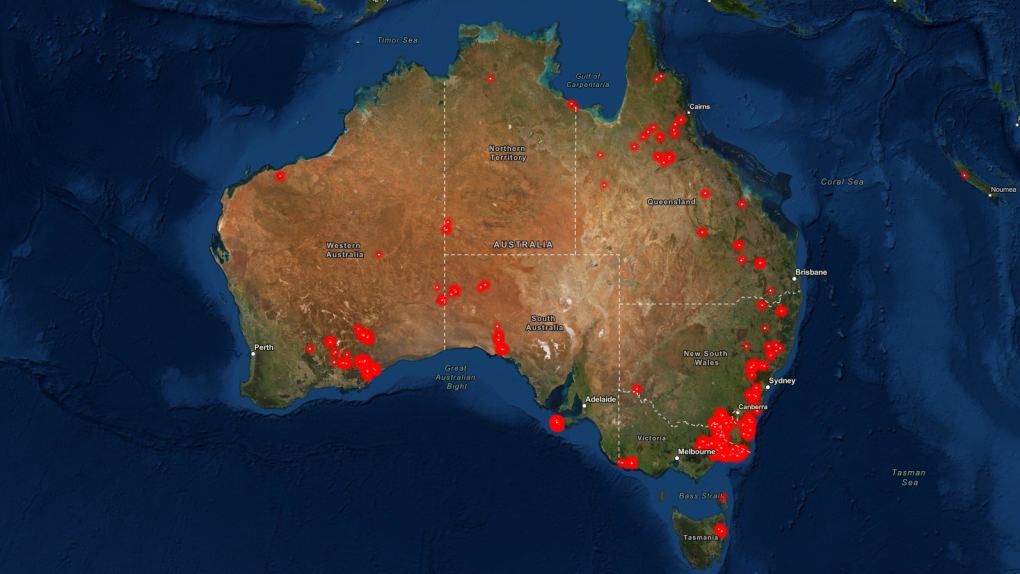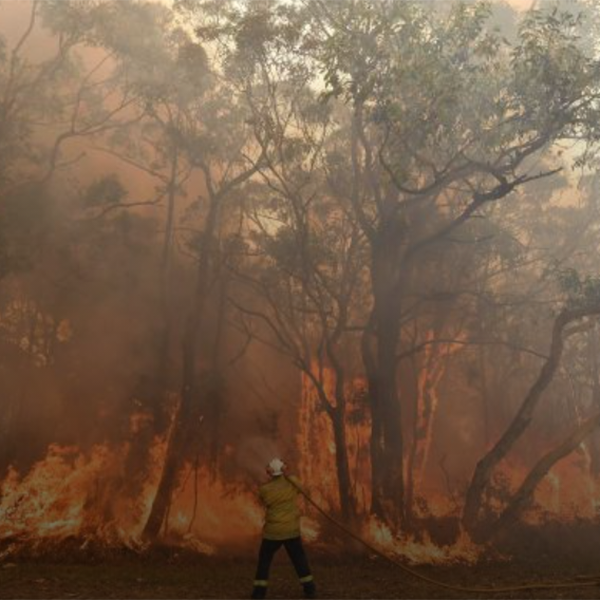This blog relates the story of bushfires in Australia, revisits Australia’s disastrous 2019-2020 bushfires, and makes connections with the numerous reports and resources that have followed.
The Royal Commissions Federal and NSW)
The report of the Royal Commission into National Natural Disaster Arrangements (October 2020) covers bushfires in Australia and stated that:
- The 2019-2020 bushfires in Australia were an ‘ecological disaster’. Fires extended across approximately 30 million hectares of land, covering native forests and grasslands that serve as wildlife habitat and house ecosystems.
- Over 330 threatened species and 37 threatened ecological communities protected under national environmental law were in the path of the bushfires.
- Nearly three billion animals were killed or displaced and many threatened species and other ecological communities were extensively harmed.
- At least 80% of the Blue Mountains World Heritage area in NSW and 50% of the Gondwana world heritage rainforests in Queensland (QLD) were burned.
- Every state and territory suffered from those fires to some extent. The fires did not respect state borders or local government boundaries.
- On some days, extreme conditions drove a fire behaviour that was impossible to control.
- Estimates of the national financial impact are over $10 billion.

Thermal satellite image of bushfires in Australia (Esri Canada)
Fire and climate change
In regard to climate change, the Royal Commission report concluded:
- Extreme weather has already become more frequent and intense because of climate change; further global warming over the next 20 to 30 years is inevitable. Globally, temperatures will continue to rise, and Australia will have more hot days and fewer cool days. Sea levels are also projected to continue to rise. Tropical cyclones are projected to decrease in number, but increase in intensity. Floods and bushfires are expected to become more frequent and more intense. Catastrophic fire conditions may render traditional bushfire prediction models and firefighting techniques less effective.
The NSW Bushfire Royal Commission made a stronger statement:
- The Royal Commission acknowledges that climate change fuelled the Black Summer bushfires, and that more dangerous weather conditions for Australia are likely to occur throughout the country in the future due to a warming climate: “As the events of the 2019-2020 bushfire season show, what was unprecedented is now our future.”
Carbon dioxide emissions
The Department of Industry, Science, Energy and Resources estimated that, up to 11 February 2020, approximately 830 million tonnes of carbon dioxide equivalent (MtCO2-e) were emitted by the bushfires, considerably more than Australia’s typical annual emissions of approx. 533 MtCO2-e.
Misinformation campaign
It was commonly reported in the media that the fires were the result of arsonists, even that they were deliberately lit by greenies. Social media analysis suggested that bot and troll accounts were involved in a “disinformation campaign”. The false claims were, in some cases, used to undermine the link between the current bushfires and the longer, more intense fire seasons brought about by climate change.
Hazard reduction
Both RC reports take a nuanced view of hazard reduction activities, acknowledging that while they can reduce risk, their value is diminished in extreme weather fuelled by climate change. It states unequivocally that hazard reduction is not a panacea: “We heard many perspectives from public submissions that describe prescribed burning as, in effect, a panacea – a solution to bushfire risk. It is not.”
Cultural burning
There has been a call by many to bring back the cultural burning employed so successfully by Australia’s First Peoples for tens of thousands of years to manage the landscape. But a cultural burn is not a hazard reduction burn. “A cultural burn is not guided by a prescription, it is guided by the close relationship that the Aboriginal Cultural Fire Practitioner has with Country and everything in it.”
The story of fire in the Australian landscape
We need to go back to school. The ABC’s Radio National program Rear Vision recently aired an excellent episode called ‘The story of fire in the Australian landscape’. We live on a continent that has been shaped by fire for thousands of years and in a landscape populated by vegetation dependent on fire. In this program several eminent fire experts and historians share their knowledge of Australia’s fire history and how we have come to be where we are regarding bushfires in Australia.
The fire stick is a point of great continuity in Australian history, and I hope Australians can find a way to bring the various fire sticks and their various reincarnations together and find an appropriate way to exercise stewardship over a very fire prone land. You’re not going to do it with air tankers and engines. You’re going to have to do it with fire.
It can be heard here:
Or visit the RN Rear Vision website here.
The transcript is here: The story of fire in the Australian landscape

